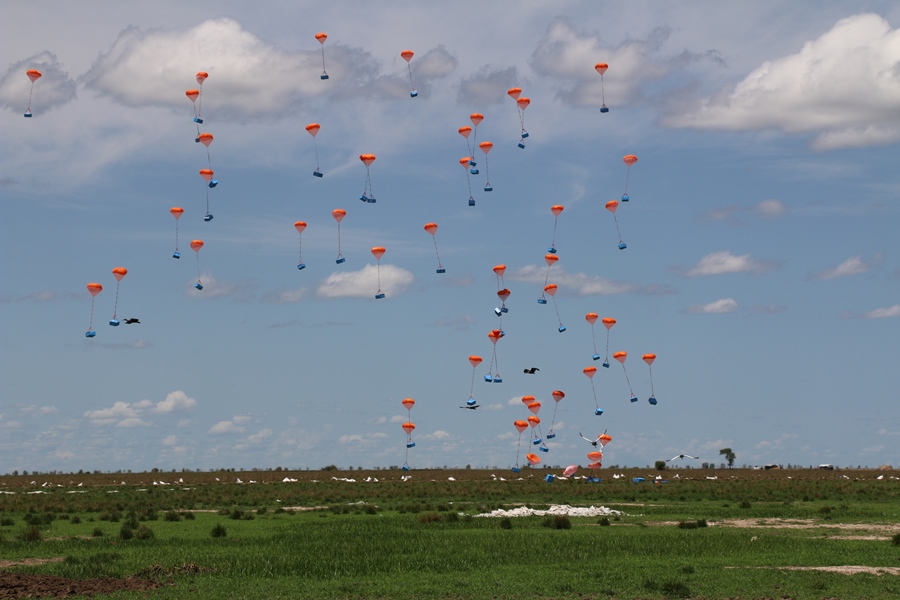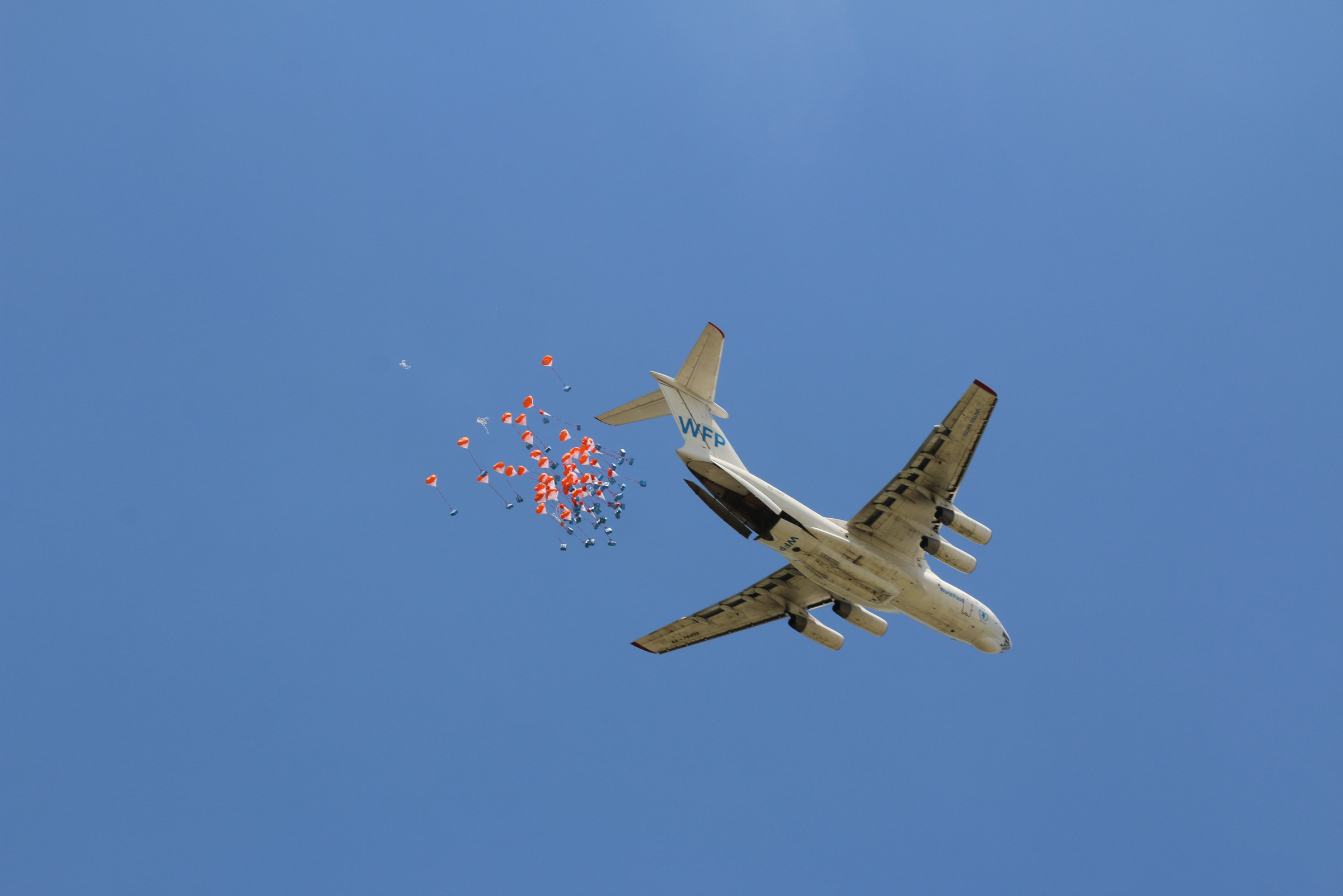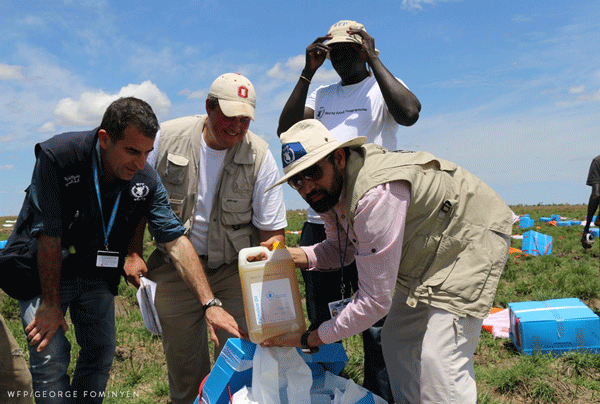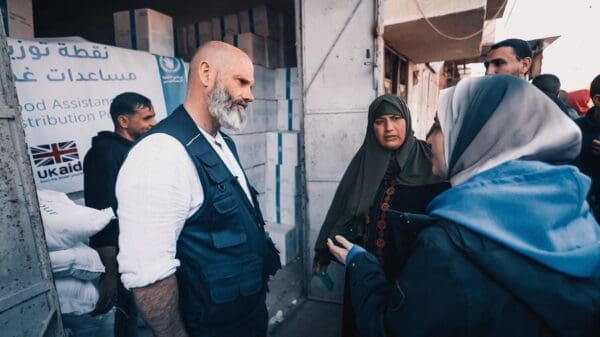
Hope Looks Like: Parachutes of Food Assistance From Above
From May to October each year, the rainy season in South Sudan brings torrential downpours and flooding that wipes away more than half of the country’s roads, cutting off entire communities from food.
In this fragile nation, where over 2 million people have fled their homes to escape a civil conflict that began in 2013, thousands of families now rely on WFP’s food rations to survive. To make sure these vulnerable communities receive the nutrition they need, WFP’s logistics experts are exploring new ways to delivering hope via airdrop.
Airdrops are among the most iconic images of WFP in action, but this delivery method is only used as a last resort. More often, WFP’s food assistance arrives by truck, ship or in the form of an electronic voucher. Airdrops are reserved for the most difficult and remote locations, where there is no other way by land, river or sea to reach a community.
This is the situation right now in South Sudan.

Because vegetable oil is heavier and more difficult to transport than many of WFP’s staple foods, WFP typically relies on helicopters to deliver small—and often inefficient—quantities. But thanks to a partnership with the U.S.-based company SkyLife, WFP is working to cut the use of helicopters for air delivery of vegetable oil by 50 percent this year, which could save the agency nearly $14 million a year.
“It was the first time we were delivering oil by parachutes and everyone was very nervous, but I must say it has been quite some success,” said WFP logistics officer Adham Effendi following the first drop near Ganyiel, a village surrounded by swampland in southern South Sudan.
What makes these latest airdrops in South Sudan unique is what the packages contain. In addition to beans and cereal, WFP recently began delivering fortified vegetable oil—a key food commodity used around the world—via air drop.
Because vegetable oil is heavier and more difficult to transport than many of WFP’s staple foods, WFP typically relies on helicopters to deliver small—and often inefficient—quantities. But thanks to a partnership with the U.S.-based company SkyLife, WFP is working to cut the use of helicopters for air delivery of vegetable oil by 50 percent this year, which could save the agency nearly $14 million a year.
“It was the first time we were delivering oil by parachutes and everyone was very nervous, but I must say it has been quite some success,” said WFP Logistics Officer Adham Effendi following the first drop near Ganyiel, a village surrounded by swampland in southern South Sudan.

South Sudan is one of the most difficult regions where WFP works, but the growing need for humanitarian assistance there means that U.N. staffers like Adham never give up.
This year, WFP plans to reach three million people in South Sudan with lifesaving emergency food assistance, including over one million people directly affected by conflict.




